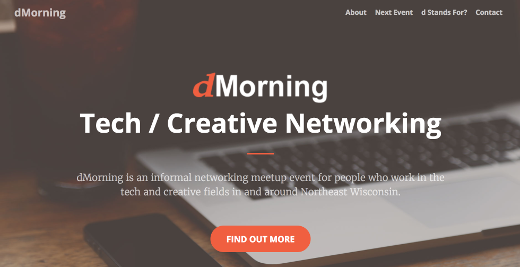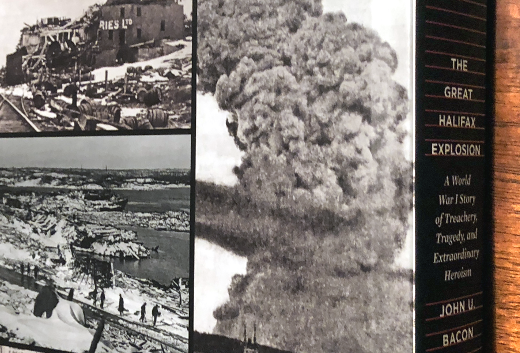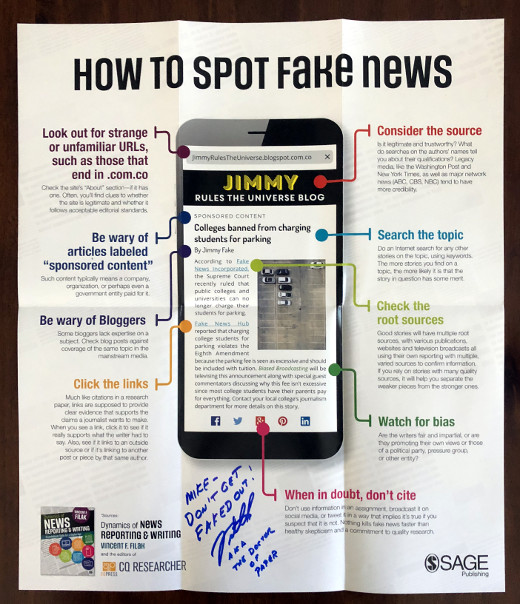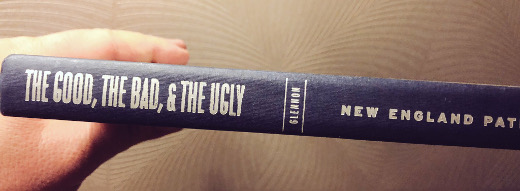dMorning Tech Creative Networking In Northeast Wisconsin on October 19
I am thrilled to announce a networking event for people who work in the tech and creative fields in Northeast Wisconsin. Introducing dMorning.
What is dMorning?
The idea behind dMorning is relatively simple – informal networking before the busy workday starts, with no set rules and no agenda. Since I moved to the Fox Valley last year, I have been looking for something like this, as I work in the Web and I am looking to meet people who work in similar fields in the area.
I hosted a variety of meetups when I lived in Chicago – some very specific and others more general – and have found the latter to be more interesting and worthwhile. A casual gathering of people to talk about what they are working on, sharing stories and bouncing ideas off each other… this is something I have wanted to restart for a while, and why not here? My plan is for this to be a monthly event.
The next dMorning will be on Friday, October 19 beginning at 7:30 am at All Seasons Coffeehouse in Appleton, conveniently located off I-41 at Wisconsin Avenue. I say it ends at 9:30 am, but anyone can stay longer. There is no cost for dMorning; you just pay for any beverages or food you purchase from this locally-owned business.
What’s in a name?
So why did I call this dMorning? As I sought out a name for this event, I didn’t want to pick something too limiting. On the Web site at dMorning.com there are some ideas of what the “d” can stand for.
Hope to see you there!
This is from The Hot Iron, a journal on business and technology by Mike Maddaloni.
Did you enjoy this? Subscribe to The Hot Iron by RSS/XML feed or Read by Email.
Announcements • Technology • Thrive • Web Design • Web Development • (0) Comments • Permalink
My Takeaways from The Great Halifax Explosion
Shortly after moving to the Boston area many years ago, and as the leaves fell and the snow covered the lawns, I learned how each year a Christmas tree was delivered to the City of Boston as a gift of the people of Halifax, Nova Scotia, Canada.
Why the tree was sent, though, wasn’t we’ll communicated. And to be honest, the thought of pursuing the story was never in me.
After reading The Great Halifax Explosion: A World War I Story of Treachery, Tragedy, and Extraordinary Heroism by John U. Bacon, not only did I learn the reason for the gift of the season, but the sad and amazing story that lead up to this perennial gift. Interestingly, I received a copy of this book from my sister as a Christmas gift.
With all of what was new to me, my takeaways from this book were few, but deep.
The story of the devastation of Halifax – In 1917, two ships collided in the harbor in Halifax, one of the ships being stocked to the gills with artillery and explosives with a final destination of England to support their efforts in World War I. The explosion destroyed most all of Halifax and killed thousands, and with the determination of the survivors and outside help – including much from Boston - the city was rebuilt.
I had no idea – Even as a self-proclaimed history buff I had never heard this story, despite growing up in New England. Though I honestly can’t say I’m surprised.
I want to visit Halifax – As I was reading The Great Halifax Explosion, I felt like I was there, over 100 years ago in the Canadian port city. I have never been to Halifax, but after reading this story I want to visit.
The Great Halifax Explosion is a page-turner, a compelling 360 degrees of the stories of the people, places and events that surrounded Halifax and their relationship with the world over a century ago. It is a well-written, great read that would be loved by history buffs, as well as anyone likes a story of tragedy and triumph. Or anyone who has admired the beautiful Christmas tree that Halifax sends to Boston each year.
As I pass along all books I read, I couldn’t think of anyone better than my wife’s cousin, who is also a history buff, but with much, much more breadth and depth. I recall years back meeting him with my wife when he was visiting Boston, sitting at the Trident Bookstore on Newbury Street, talking about many things including history. It’s interesting how much of life comes full circle in many aspects.
This is from The Hot Iron, a journal on business and technology by Mike Maddaloni.
Did you enjoy this? Subscribe to The Hot Iron by RSS/XML feed or Read by Email.
Book Take-Aways • (0) Comments • Permalink
Talking About Fake News in 2004
It seems everywhere you look today you see something about fake news, from those calling something fake news to those who are defending themselves for not being fake news. However, the idea of fake news is nothing new, and as a matter of fact it was something that I was talking about publicly into 2004.
Yes, I said 2004, 14 years ago from now.
So why would I remember today what happened a decade and a half ago? Interestingly I was triggered to recalling it from a poster by a colleague of mine, Dr. Vincent Filak, professor of journalism at the University Wisconsin – Oshkosh. The poster is about how you can spot fake news and was created as a complement to his recently published collegiate textbook, Dynamics of News Reporting and Writing: Foundational Skills for a Digital Age.
Now let’s take a trip back along memory lane and talk about how even then I realized this was an issue that would be impacting not only news but the Internet and the Web as well.
Back in time
In the spring of 2004 I was asked to speak at the annual conference for winners from Massachusetts of the Hugh O’Brien Youth Leadership Award, best known as HOBY, that was taking place at (then) Babson College in Wellesley, Massachusetts. I had been a recipient of the award back in the 1980s when I was a high school sophomore and recently I had connected with the state HOBY organization in Massachusetts because of something I had written. Shortly after the death of retired New England Patriots player Ron Burton, who after leaving the football gridiron was a champion for charitable causes in the Boston area including the HOBY award, I had written about him on my former Web site GoPats.com – as I have retired that Web site, you can read the original article I wrote on Burton here thanks to the Internet Archives’ Wayback Machine.
After connecting with the HOBY organization about my article, they asked me to speak at their 2004 conference for 2 purposes, one as part of a remembrance of Burton and to participate in a panel about the media. The panel was would consist of Steve Burton, a Boston sportscaster for WBZ-TV and Ron’s son, sportswriter Dan Shaughnessy from the Boston Globe and myself, a technology strategist representing the Internet. I was honored to be asked to speak to the students, and I also realized the challenge of representing the Internet along with two well-known journalists, but I was up to the challenge.
As the conference began, following a video tribute of Ron Burton which included a video from Hugh O’Brian himself, I gave my tribute, talking about the 2 times I met him over the years. Next up was the panel on the media, with myself, Burton and Shaughnessy. Each of us had a few minutes for an introduction to talk about our expertise. Burton spoke first, then Shaughnessy and finally myself. As I listened to their opening statements I felt a little intimidated representing all of what the Internet was and is, but is someone who is been working with it professionally at that point for over a decade, I felt very comfortable and confident in sharing my knowledge to these young people who themselves never knew a time without the Internet.
Following this was a Q&A session where the students asked a lot of great questions. One in particular that I remember was on believing what you read online. First Burton spoke, and what I recall from his comments was him talking to journalistic integrity and how on television you had to make sure to get it right the first time, for even if you have the opportunity to retract it later, many people may not see that retraction as you would in a newspaper. When Shaughnessy spoke, he took more of a cavalier approach; I remember him started out by saying that you really can’t believe anything you read on the Internet. This was not surprising to me because this reflected his writing style, which I consider arrogant, and is why I only occasionally read his columns.
After his comment about not believing anything you read online, and while he was still talking, I reached into my blazer pocked and grabbed my PalmPilot handheld device (remember, this 2004 and PalmPilots were what we used back then!) and I opened up the Web clipping app for the Globe, Boston.com, and brought up an article was written by Shaughnessy about the Boston Red Sox that I had just read that morning. When it was my turn to respond I held it up my PalmPilot and, in a casual way, pointed out I had read Shaughnessy’s latest article online and questioned if I should believe it! He was a little taken aback by my opening line.
I continued my thoughts to the students by simply saying you should know your source. Whether you read it online or watch it on TV or read it in the newspaper, you should have an idea of where the information is coming from, and if the method you are reading it is a reputable one. I reinforced the point by saying if you are unsure, you should ask someone – a parent or teacher – and in any case they should take what they have consumed and form their own opinion. This approach is something I keep front of mind and share with others to this day.
And thus a modern journalism guide triggered me to remember that event from so long ago in context to today. To build on that, I not only try to understand the story but the headline as well – there are many Web sites and sources that deliver what ends up being misleading headlines in the hopes of you clicking on them, reading whatever the story is about, and in the process gaining ad impressions on their Web site. I have found these “fake headlines” linking to stories by legitimate journalists I am familiar with, only to read a story that doesn’t match the headline. Knowing your source is not only more involved but vital today.
Deconstructing Recognizing Fake News
Sadly I believe the idea of fake news has been around even longer than before I did my talk back in 2004. The concept of yellow journalism and opinions by early newspaper publishers have tried to influence readers for years. In a digital world where it takes much less resources to disseminate news – real or otherwise – being able to decipher the true from the fake has a greater importance. Where some look to the media companies and the government to solve this problem, the ultimate responsibility falls on ourselves. Buyer – or reader – beware!
This is from The Hot Iron, a journal on business and technology by Mike Maddaloni.
Did you enjoy this? Subscribe to The Hot Iron by RSS/XML feed or Read by Email.
Business • Strategize • (0) Comments • Permalink
My Takeaways From The Good The Bad And The Ugly New England Patriots
When people think of the New England Patriots football team, their success over nearly the last 2 decades is what likely comes to mind. From 5 Super Bowl titles to longtime quarterback Tom Brady, it’s not surprising. However not everything with the team has always been sunshine and rainbows.
I know – as a longtime fan and season ticket holder, I lived through some of the embarrassing times of the Pats. However these stories stretch back even before I was born! The scrappy, low-budgeted team that didn’t have a set home stadium for its first decade that became one of the most valuable, treasured – and hated – team; it’s a Cinderella story.
Sean Glennon tells many of the positive and not-so positive stories in The Good The Bad The Ugly New England Patriots, chronicling nearly the first half-century of the team. I knew this would be a great book as I really enjoyed Glennon’s first book on the team, This Pats Year, which chronicled one season of following the team and their fans. I found the book in final boxes I unpacked after a recent move, and had forgotten I had it. Where it was a treat to find it, I don’t remember when or how I had acquired it. All things considered, I have a few takeaways for both fans and non-fans of the team.
I had forgotten many stories about the Patriots – There were a lot of nuances and details of some of the highs and lows of the team over the years I had simply forgotten. Call it what you like, but many times as I was reading the pages of this book, I said a lot of “oh, yea’s” and “wow’s” to some of the tales told by Glennon. That alone made reading them along with the stories I remembered an enjoyable experience.
Journals like this need to be updated – It wasn’t until I was about a quarter way thru the book that I looked and found it came out in 2008 – 10 years ago! Why it took me so long to read it I can’t say, but I am glad that I finally did. As a lot has transpired with the team since then, it would be great to read an update to it. I won’t hold my breath on that thought for when I tweeted Glennon about it, I didn’t get the sense he shared my sentiment!
Where The Good The Bad The Ugly New England Patriots is written for fans of the team, anyone who is a football fan, especially those who lived through the years covered in the book, would find it a good read. Which is what I hope my friend whom I gave the book to felt as well, as he also lives away from New England and these kinds of stories may also elicit the same responses in him they did for me.
This is from The Hot Iron, a journal on business and technology by Mike Maddaloni.
Did you enjoy this? Subscribe to The Hot Iron by RSS/XML feed or Read by Email.
Book Take-Aways • Thrive • (0) Comments • Permalink
Ciao ColdFusion

After recently re-reading my post about “retiring” my New England Patriots fan Web site GoPats.com, I realized that with its shutdown, I also took down the last remaining Web site I built using ColdFusion Web technology.
For those of you who are not technical – no fear, as this is not a technical post, rather one about a journey and choices made along the way – good and bad – and where I am today. So you don’t have to tune out just yet!
You Never Forget Your First Web Scripting Language
When I saw the very first graphical Web browser, NCSA Mosaic, shortly after it launched in 1993, I was hooked, and realized this is where I needed my career in technology to go – creating Web sites. Up to that point I was creating reports and screens on mainframe computers and there was nothing exciting about a black screen with white letters. So the playing and experimenting I did with Web sites – including GoPats.com – led to my first Web job a few years later.
For as much as I did to that point, when I started that job I quickly realized I still had a lot to learn. Another colleague at the small consulting firm I was at realized it too, and reminded me of it consistently! Eventually we would become friends and solid co-workers and even did a successful project that pissed off the president of said firm. And it was this colleague who one day early on in my time there asked me if I knew ColdFusion. I said no. He said that I could learn the basics of ColdFusion in an hour, creating a dynamic Web page that queried information from a database and displayed it in the browser. He also said that if I couldn’t do that in an hour that I was stupid! Needless to say I was able to do what he said and within 60 minutes. For me this was a big event, and got me started on more advanced Web site development.
Armed with this new skill, I wanted to use it, but my firm didn’t have any projects that required ColdFusion. So I sought out such projects elsewhere. As I had recently created a Web site for the Boston Jaycees, a non-profit organization I was involved with, I decided to apply ColdFusion code to it, giving the Board the ability to maintain the Web site with ease, and not requiring any HTML or any other coding knowledge. For 1997, this was rather unique. I then applied similar code to GoPats.com and some other personal Web projects, as well as some freelance Web projects I had taken on, work that would expand and eventually lead me to starting my own Web consulting business.
Becoming Web Multilingual
In 1996, as I started working for that small consulting firm, Microsoft didn’t have a Web strategy. By the following year it did, combining its Web browser and scripting language with some of its marketing genius. It was in 1997, when working on a project for a client using Microsoft’s client-server (e.g. PC-based) Visual Basic language, they asked me if I knew anything about the Web. I said yes, and they gave me a Microsoft Web server and its Web applications as part of my responsibility. Only one small thing, I didn’t know anything running a Web server or the language – Active Server Pages (ASP) – the applications were in. This has been a recurring theme throughout my career, but I digress. With the purchase of a few books and some guidance of a summer intern about 10 years my junior, I quickly got up to speed in developing Web pages and Web business applications for the client. Life was good.
All along, however, I was still working with ColdFusion – I had several sites using the technology, plus ColdFusion’s owner, Allaire, was in the Boston area and it had a good user group. There was, however, the beginnings of a change in the landscape. ColdFusion, for all of its ease of use and power, was a commercial product and to run it on one Web server cost somewhere over US$1,000. Microsoft’s Web server and ASP were free. There were other open-source (also free) Web scripting languages I was aware of, like Perl and PHP, though I was not using those at the time. Over time Allaire was acquired by Macromedia who was later acquired by Adobe. Though Web sites written in ColdFusion continued to work just fine even to this day, the Web language fell out of favor for many and they felt it was time to move onto other tools.
For myself, when I started my Web consulting business in 2004, I too was looking at other options, including other programming languages as well as packaged software instead of custom developed applications. This research was done along with the ColdFusion and ASP I was working with for my clients. All of my sites were powered by a content management system (CMS), going all the way back to my first Jaycees site. As time went on I continued to enhance and perfect my own CMS, but at the same time other CMS products came out that allowed me to do what I did best for clients, without the need for developing the CMS itself. Over time I migrated sites to these new platforms, but GoPats.com kept running just fine under ColdFusion.
All Good Things...
As I discussed back when I was doing some major digital spring cleaning and closed down some Web sites, GoPats.com was the last one to go. As updates to the site declined, the cost of Web hosting did not, and is was a cost savings as well. Where I had mixed emotions about this, simplifying the number of languages I was working with and needing to keep up on was also a time savings with all else I have going on in my life now.
So, “ciao, ColdFusion!” It was fun, and we had some great times. Where we may not see each other again anytime soon, we will always have the memories of the pioneering days of the World Wide Web.
Deconstructing Working With ColdFusion
As I said early on, this was not a technical discussion, rather one of choices. We make a lot of them through life and at the time, a good choice may not necessarily be the best one down the road. Though I didn’t choose ColdFusion initially, it worked well for me and I did make decisions about working with it or not over time, until I eventually decided it was not one to continue with. The technology continued to work right up until the end, and I know there is still ColdFusion code working very well today, and you can’t ask for more than that.
This is from The Hot Iron, a journal on business and technology by Mike Maddaloni.
Did you enjoy this? Subscribe to The Hot Iron by RSS/XML feed or Read by Email.
Build • Strategize • Technology • Web Development • (0) Comments • Permalink









